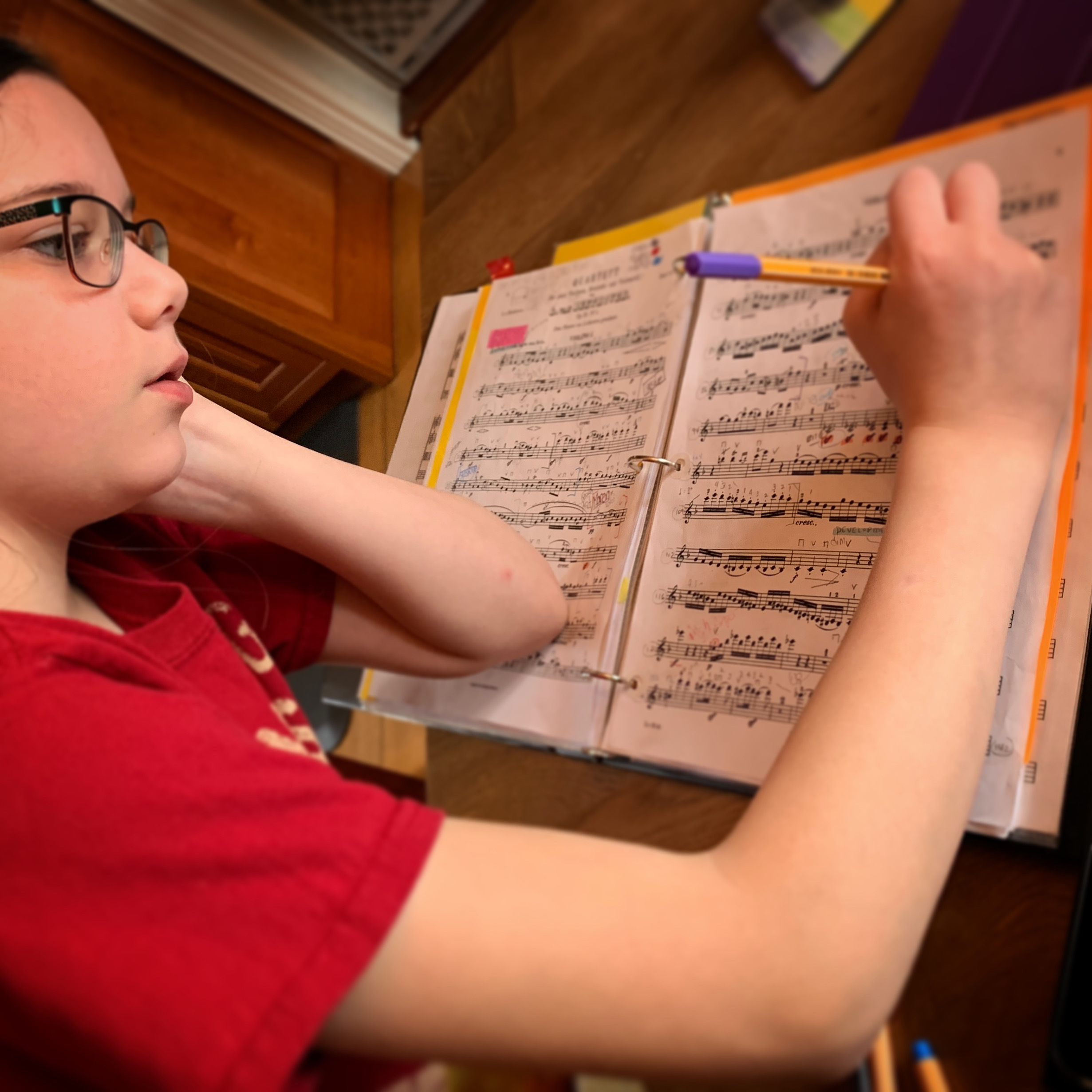No instrument? No problem!
One of the most frequent questions that comes up online is what to do if you cannot practice with your instrument. Here's a handful of tips about practicing without an instrument.

Suzuki said to only practice on the days you eat. It must have been his wry way to say: “Practice every day.” That is sound advice; and in reality, there is so much progress to be made by practicing every day. But life intervenes. We’ve been practicing for many many days now. But twice during that stretch, my daughter had to practice without an instrument because it was simply not safe to bring her instrument into the back-country where she was on a school trip.
For pianists, this comes up even more frequently. You can never really carry your piano; and you’re not guaranteed to have a piano at your destination.
So what are you to do?
Listening
While it’s almost a Suzuki mantra, listening is often the solution to a number of situations; and it’s for good reason. A fully-engrained aural representation of the music is the cornerstone of talent acquisition. If you are in a situation where taking your instrument is not possible, you can still bring along your favourite portable listening device, especially your smart phone. What are some ways you can listen on-the-road?
1. Listen ahead
You can listen to the books ahead of where you’re currently playing. Building familiarity with these pieces will be immensely helpful later when you approach them in the repertoire because by then, they’ll be built-in to your memory.
2. Listen behind
By listening to older pieces, you can refine your understanding of the piece and you can help secure your memory. And since you know the pieces well, you can listen and think about it on a different level.
3. Listen to other music
The Suzuki repertoire itself is chosen to be very goal-oriented. It’s there to be enjoyable, for sure; but the goal is to teach a technique. So branching out an listening to other music is a great activity when you find yourself without an instrument.
4. Listen actively
A type of goal-oriented listening can help a lot with the details. I’ve written about using a smartphone application to do short-segment listening. It’s easier to focus your attention carefully on small sections.
Practice the bowings
Learning the bow directions of a piece, if you are a string player can be done even without the instrument (or bow!)
Mental practice
You can always engage in mental practice. Studies of expert performers show that when they think of executing the tasks they would engage in during actual performance with their musical instrument, the same areas of the brain light up on functional MRI. Many studies have shown that evoking vivid mental imagery of the successful performance of an athletic task results in better outcomes. The same is almost certainly true in music, too.
Try to make the imagery as accurate as possible. Practice in your head at the tempo you play the piece. Imagine everything just as you would play it. Reproduce the sense of relaxation, the fingerings, the bowings.
Score study
Concert pianist, Jeremy Denk, once pointed out that the main job of the music teacher is to point out what is plainly written on the page. But, you can do that yourself! Through careful study of the score without your instrument, you can really absorb the notation
It’s always possible to practice even without your instrument. You just have to be a little creative, and be more open to what “counts” as practice.
Practice well and enjoy the experience!







